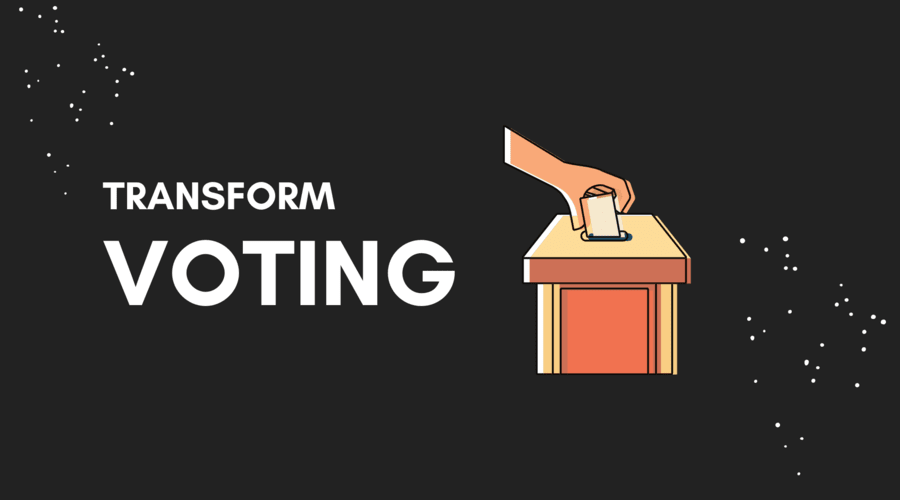
Blockchain technology and the Internet of Things (IoT) have revolutionized various industries, and one area where their potential impact is particularly promising is in verifiable voting systems. In recent years, concerns about the integrity and transparency of voting processes have led to a growing interest in leveraging blockchain and IoT to enhance the security and trustworthiness of elections. This article explores the intersection of blockchain, IoT, and verifiable voting systems, highlighting the advantages they offer and the challenges that need to be addressed. Let’s dive in!
Introduction: The Need for Verifiable Voting Systems
The integrity of voting systems is crucial for upholding democracy and ensuring the will of the people. However, traditional voting methods are susceptible to various vulnerabilities, including tampering, fraud, and lack of transparency. This has led to an increased demand for verifiable voting systems that can provide undeniable evidence of the accuracy and fairness of elections. Blockchain and IoT technologies offer promising solutions to address these concerns.
Understanding Blockchain Technology
Blockchain is a decentralized and immutable ledger that records transactions across multiple computers in a transparent and secure manner. Each block in the chain contains a timestamped and encrypted record of transactions, creating an unalterable history. The distributed nature of blockchain ensures that no single entity can manipulate the data, enhancing trust and transparency.
Leveraging Blockchain for Secure and Transparent Voting
By implementing blockchain technology in voting systems, it becomes possible to create a transparent and tamper-proof record of every vote. Each vote can be represented as a transaction on the blockchain, ensuring that it is securely stored and cannot be modified without consensus from the network. This immutability and transparency eliminate the possibility of fraud and provide a verifiable trail of the entire voting process.
- Immutable and Transparent Record: Blockchain technology provides an immutable and transparent record of every vote. Each vote is represented as a transaction on the blockchain, creating a permanent and tamper-proof trail. This ensures that the integrity of the voting process is maintained, as all transactions are recorded and cannot be altered without consensus from the network.
- Eliminating Fraud and Manipulation: By leveraging blockchain in voting systems, the risk of fraud and manipulation is significantly reduced. The decentralized nature of blockchain removes the need for a central authority, making it extremely difficult for malicious actors to tamper with the voting data. The transparency of the blockchain allows for independent verification of the results, ensuring that the outcome of the election is accurate and trustworthy.
- Increased Trust and Confidence: The use of blockchain instills trust and confidence in the voting process. With every vote securely recorded and transparently visible, voters can have faith that their votes are accurately counted. Additionally, the verifiability of the blockchain allows for audits and recounts, further enhancing the trustworthiness of the entire system.
- Enhanced Security: Blockchain’s cryptographic algorithms and consensus mechanisms provide robust security for voting systems. The use of encryption ensures that votes are securely stored and transmitted, minimizing the risk of unauthorized access or tampering. The decentralized nature of blockchain also adds an additional layer of security, as it eliminates single points of failure and makes the system resilient to attacks.
Leveraging blockchain technology for secure and transparent voting offers numerous benefits, including immutability, fraud prevention, increased trust, and enhanced security. By incorporating blockchain into voting systems, we can significantly improve the integrity and reliability of the democratic process.
The Role of IoT in Verifiable Voting Systems
The Internet of Things (IoT) comprises a network of interconnected devices that collect and exchange data. In the context of verifiable voting systems, IoT devices can play a crucial role in ensuring the integrity of the process. For example, IoT devices can be used to securely authenticate voters, capture biometric data, and transmit encrypted votes to the blockchain. This integration of IoT devices enhances the security and efficiency of the voting process.
Combining Blockchain and IoT: Benefits and Challenges
The combination of blockchain and IoT in verifiable voting systems offers several benefits. Firstly, it enables real-time monitoring and auditing of the voting process, ensuring transparency and accountability. Secondly, the decentralized nature of blockchain and the scalability of IoT make it possible to handle large-scale elections efficiently. However, challenges such as data privacy, standardization, and ensuring the security of IoT devices need to be carefully addressed to leverage the full potential of this combination.
Case Studies: Successful Implementations of Blockchain and IoT in Voting
Several real-world examples showcase the successful implementation of blockchain and IoT in voting systems. For instance, West Virginia, USA, conducted a pilot project where blockchain was utilized to enable overseas military personnel to securely cast their votes. The implementation ensured the integrity and transparency of the process while providing convenience to the voters. Similar initiatives have been undertaken in countries like Estonia, Switzerland, and South Korea, demonstrating the feasibility and effectiveness of these technologies in voting systems.
Ensuring Privacy and Data Protection
While blockchain and IoT provide enhanced security, privacy and data protection are of paramount importance in verifiable voting systems. Measures such as encryption, secure data transmission, and the use of anonymous identifiers can help protect voter information. Striking the right balance between transparency and privacy is crucial to maintain public trust in the voting process.
Overcoming Obstacles: Adoption and Scalability
Despite the potential benefits, the widespread adoption of blockchain and IoT in voting systems faces certain challenges. These include public acceptance, regulatory frameworks, interoperability between different systems, and the scalability of the technology. Collaborative efforts between governments, technology experts, and the public are essential to overcome these obstacles and ensure the successful implementation of verifiable voting systems.
- Public Awareness and Acceptance: Increasing public awareness about the benefits of blockchain and IoT in voting systems is crucial for adoption. Educating the public about the technology, addressing concerns, and highlighting successful case studies can help build trust and acceptance.
- Regulatory Frameworks: The absence of clear regulations and legal frameworks surrounding blockchain and IoT in voting systems poses a significant hurdle. Governments need to proactively establish appropriate regulations to ensure compliance, privacy protection, and standardization across different jurisdictions.
- Interoperability: Achieving interoperability between different blockchain platforms and IoT devices is essential for seamless integration into existing voting systems. Developing protocols and standards that enable cross-platform compatibility and communication is a key focus area.
- Scalability: As the scale of elections increases, the scalability of blockchain and IoT solutions becomes crucial. The technology should be able to handle a large volume of transactions and accommodate a growing number of participants without compromising performance and security.
- Cost and Infrastructure: Implementing blockchain and IoT in voting systems requires initial investment in infrastructure, hardware, and expertise. Addressing the cost implications and ensuring access to necessary resources is essential for widespread adoption, particularly in resource-constrained environments.
- Cybersecurity: Protecting voting systems from cyber threats and ensuring the integrity of data is a significant challenge. Robust security measures, regular audits, and continuous monitoring are necessary to safeguard against potential attacks and vulnerabilities.
- User Experience: Designing user-friendly interfaces and intuitive experiences for both voters and election administrators is crucial. User-centric design and extensive testing can enhance usability and promote user adoption.
- Collaborative Approach: Overcoming adoption and scalability obstacles requires collaboration between governments, technology experts, policymakers, and the public. Partnerships and knowledge-sharing initiatives can facilitate the development and implementation of effective solutions.
These pointers address some of the key obstacles that need to be overcome to achieve widespread adoption and scalability of blockchain and IoT in verifiable voting systems.
Future Perspectives: Advancements in Blockchain and IoT for Voting
The field of blockchain and IoT for verifiable voting systems is rapidly evolving. Advancements such as zero-knowledge proofs, decentralized identities, and secure hardware integration hold the promise of further enhancing the security, privacy, and efficiency of the voting process. Continued research and development, as well as collaboration between academia, industry, and governments, will shape the future of voting systems.
Conclusion
Blockchain and IoT technologies offer unprecedented opportunities to create secure, transparent, and verifiable voting systems. By leveraging the immutability and transparency of blockchain and the capabilities of IoT devices, the integrity and trustworthiness of elections can be significantly enhanced. However, challenges such as privacy concerns, standardization, and scalability need to be addressed for widespread adoption. The combination of blockchain and IoT holds immense potential to transform the way we conduct elections and uphold democracy.
FAQs
Q1: Can blockchain and IoT completely eliminate election fraud? A1: While blockchain and IoT technologies can significantly reduce the risks of election fraud, it is important to implement comprehensive security measures and address potential vulnerabilities to ensure the integrity of the voting process.
Q2: Are blockchain-based voting systems susceptible to hacking? A2: Blockchain-based voting systems are designed to be highly secure and resistant to hacking. However, it is crucial to implement robust security protocols, regularly update the systems, and conduct thorough audits to minimize potential risks.
Q3: How can blockchain and IoT enhance voter participation? A3: Blockchain and IoT can facilitate remote voting, enable secure digital identities, and provide real-time access to election information. These advancements can enhance convenience and accessibility, leading to increased voter participation.
Q4: Are there any legal or regulatory challenges associated with using blockchain and IoT in voting systems? A4: The implementation of blockchain and IoT in voting systems may face legal and regulatory challenges, such as data privacy regulations, cross-border considerations, and the establishment of trust frameworks. Collaboration between stakeholders is necessary to address these challenges effectively.
Q5: What are the potential risks of using IoT devices in voting systems? A5: The use of IoT devices in voting systems introduces certain risks, including device vulnerabilities, data breaches, and potential interference. Implementing strong encryption, rigorous testing, and adherence to security best practices can mitigate these risks.
I’m a highly experienced and well-respected author in the field of cryptocurrency. I have been writing about Bitcoin, Ethereum, and other digital assets for over 5 years. In addition to my career as an author, I’m also a highly sought-after keynote speaker and consultant on all things crypto and I’m passionate about helping people understand this complex and often misunderstood industry.
